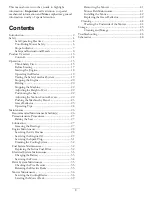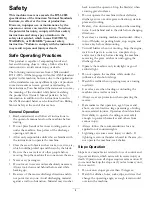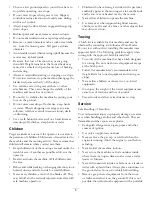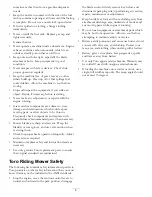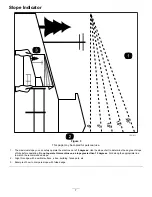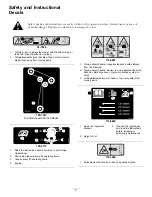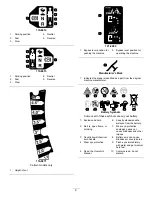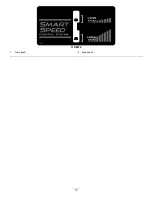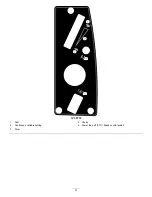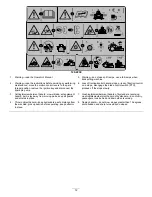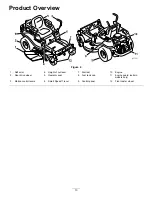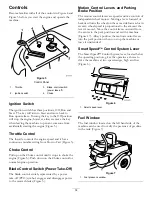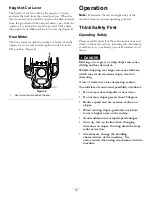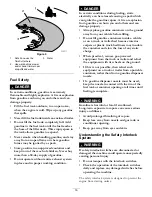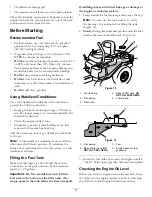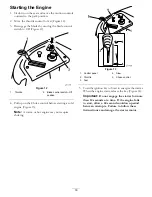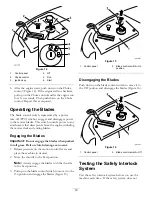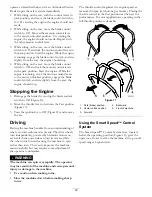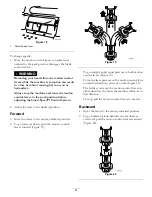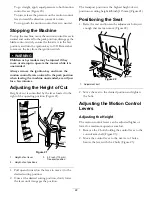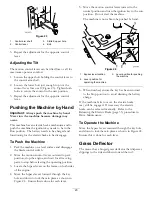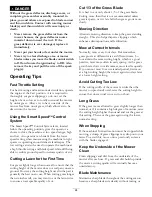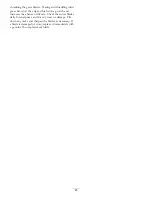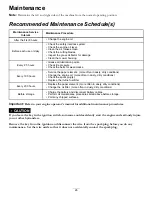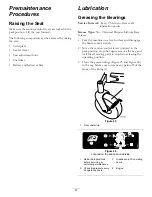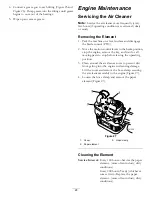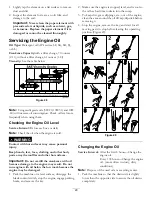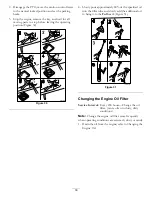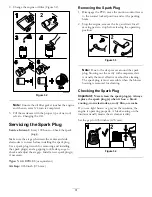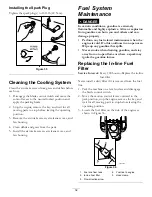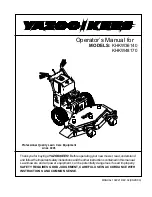
•
The blades are disengaged.
•
The motion control levers are in the park position.
The safety interlock system also is designed to stop the
engine whenever the control levers are out of the park
position and you rise from the seat.
Before Starting
Recommended Fuel
•
For best results, use only clean, fresh, unleaded
gasoline with an octane rating of 87 or higher
((R+M)/2 rating method).
•
Oxygenated fuel with up to 10% ethanol or 15%
MTBE by volume is acceptable.
•
Do Not
use ethanol blends of gasoline (such as E15
or E85) with more than 10% ethanol by volume.
Performance problems and/or engine damage may
result which may not be covered under warranty.
•
Do Not
use gasoline containing methanol.
•
Do Not
store fuel either in the fuel tank or fuel
containers over the winter unless a fuel stabilizer is
used.
•
Do Not
add oil to gasoline.
Using Stabilizer/Conditioner
Use a fuel stabilizer/conditioner in the machine to
provide the following benefits:
•
Keeps gasoline fresh during storage of 90 days or
less. For longer storage it is recommended that the
fuel tank be drained.
•
Cleans the engine while it runs.
•
Eliminates gum-like varnish buildup in the fuel
system, which causes hard starting.
Add the correct amount of gas stabilizer/conditioner
to the gas.
Note:
A fuel stabilizer/conditioner is most effective
when mixed with fresh gasoline. To minimize the
chance of varnish deposits in the fuel system, use fuel
stabilizer at all times.
Filling the Fuel Tank
Make sure the engine is shut off and the motion
controls are in the park position. Tank maximum
capacity is 2.9 gallons.
Important:
Do Not overfill fuel tank. Fill the
fuel tank to the bottom of the filler neck. The
empty space in the tank allows the fuel to expand.
Overfilling may result in fuel leakage or damage to
the engine or emission system.
1. Clean around the fuel tank cap and remove the cap.
Note:
You can use the fuel window to verify
the presence of gasoline before filling the tank
(Figure 10).
2.
Slowly
add regular, unleaded gasoline until the fuel
reaches the base of the filler neck (Figure 10).
G014474
1
2
3
4
5
6
Figure 10
1.
Fuel tank cap
4.
Base of filler neck,
DO
NOT FILL PAST HERE
2.
Fill opening
5.
Fuel window
3.
Filler neck
G014895
1
2
3
4
Figure 11
1.
Fill opening
3.
Fuel
2.
Base of filler neck,
DO
NOT FILL PAST HERE
4.
Empty space for fuel
expansion.
3. Install the fuel tank cap securely and tighten until it
“clicks”. Wipe up any gasoline that may have spilled.
Checking the Engine Oil Level
Before you start the engine and use the machine, check
the oil level in the engine crankcase; refer to Checking
the Oil Level in the Engine Maintenance section.
17
Summary of Contents for TimeCutter MX 4260
Page 10: ...119 8874 1 Low speed 2 High speed 10 ...
Page 48: ...Schematics g017655 Electrical Diagram Rev A 48 ...
Page 49: ...Notes 49 ...
Page 50: ...Notes 50 ...
Page 51: ...Notes 51 ...

